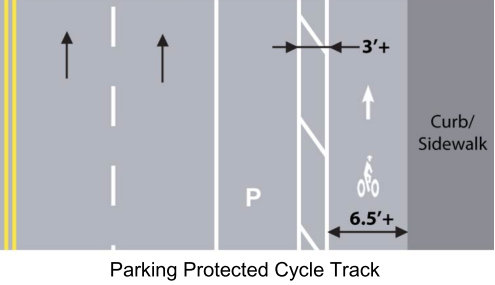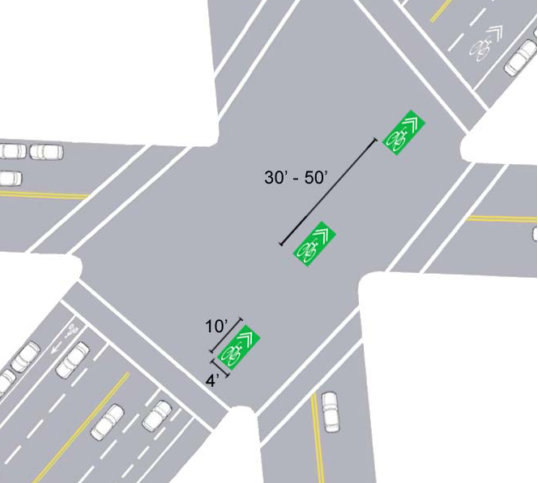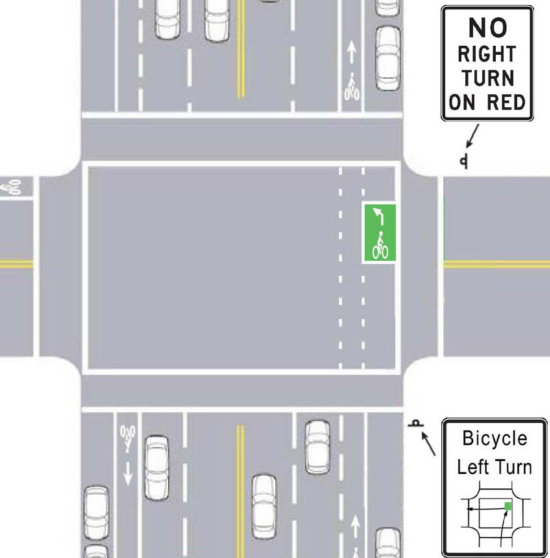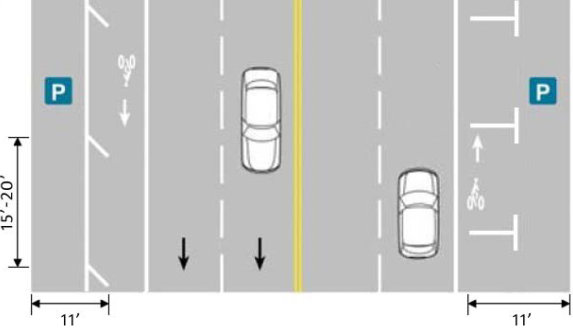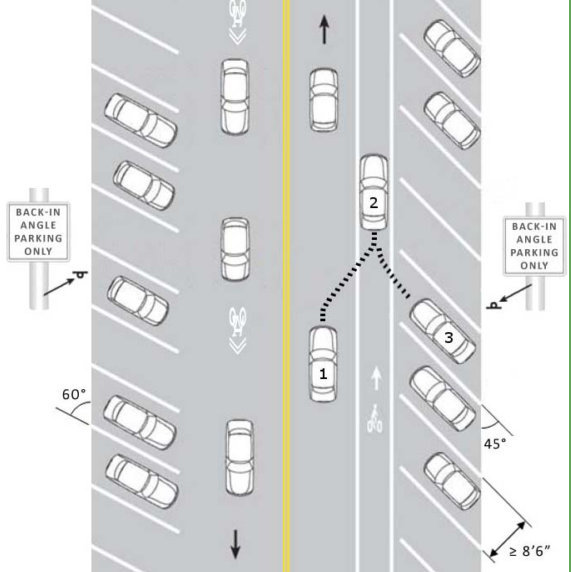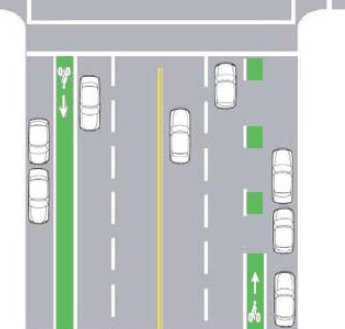SFMTA Drafting Design Standards to Streamline Innovative Bike Treatments
4:21 PM PDT on May 11, 2012
The SFMTA is developing a new engineering guide for bike infrastructure that should help bring street designs like protected bike lanes to more San Francisco streets. Known as the Innovative Bicycle Treatment Toolbox, the guide promises to accelerate the city's adoption of high-quality bikeway design treatments.
"The Innovative Bicycle Treatment Toolbox creates standardized guidance for the city of San Francisco in the use of new bicycle treatments being implemented throughout the U.S.," said SFMTA spokesperson Paul Rose.
The guide is based on proven designs for bike infrastructure that more American cities (including SF) are implementing to make bicycling safer and more accessible to a wider range of people. While these treatments are becoming more common in the U.S., they have yet to be established in "official traffic engineering regulations such as the Manual on Uniform Traffic Control Devices (MUTCD) or the Highway Design Manual," said Rose.
The treatments included in the toolbox: protected and buffered bike lanes, door-zone bike lane treatments, green paint on bike lanes and intersection guide markings, bike boxes, "safe-hit" posts (a.k.a. "traffic channelizers"), back-in angled parking, "green wave" signal timing for bike speeds, "two-stage left turn" markings, and "neighborhood greenways" (a.k.a. bike boulevards).
"These are smart, innovative designs that, once implemented in the right places, will make San Francisco's streets safer and easier to bicycle on," said Leah Shahum, executive director of the San Francisco Bicycle Coalition. "We commend the SFMTA's work in thinking out of the box and urge them to move forward with implementation on our many city streets that need improvement."
Though the SFMTA has already implemented most of the treatments in the toolbox, they aren't widespread. The most recent examples are the city's first parking-protected bike lane in Golden Gate Park and the green-backed sharrow markings guiding riders through the Wiggle.
The SFMTA plans to use these treatments more frequently to reach its goal of 20 percent bike mode share by 2020. By establishing its own guidelines, the agency can "ensure consistency and predictability of these new treatments within our jurisdiction, while providing discussion of how these new treatments are addressed in existing regulations," said Rose. "This toolbox will help planners and engineers decide whether an innovative treatment is appropriate at a given location that is slated for bicycle improvements. It will also make it faster and more efficient for engineers to design the innovative facilities."
Streamlining this process is critical to the widespread adoption of cycling in the city. The current rate at which the SFMTA is rolling out improvements is widely seen as insufficient to meet its ambitious mode share goals.
The toolbox is largely informed by the National Association of City Transportation Officials' Urban Bikeway Design Guide, a manual that leading bikeway engineers from cities around the country, including SF, contributed to. Although bike advocates are pushing for legislative changes at the state level to give cities more freedom to use treatments from the NACTO guide, their most recent effort was undermined, and local planners can face greater liability when using treatments not included in more established guidelines like the MUTCD. Creating this set of guidelines could provide planners a set of locally-approved, widely tested standards to rely on.
Rose said the guide "includes specific implementation details that are in line with California laws, while making style determinations to ensure consistency of application throughout San Francisco, even if there is more than one legal way to do so."
The toolbox could also be looked to as an example for five other cities that will share expertise on innovative bike infrastructure in the Bikes Belong "Green Lane" project.
Agency staff said the toolbox is still in draft form and not ready to be widely published yet. Although the guidelines will "continue to be a living document," Rose said, the agency will submit "a finalized version" to the SF County Transportation Authority by June 30.
Read More:
Stay in touch
Sign up for our free newsletter
